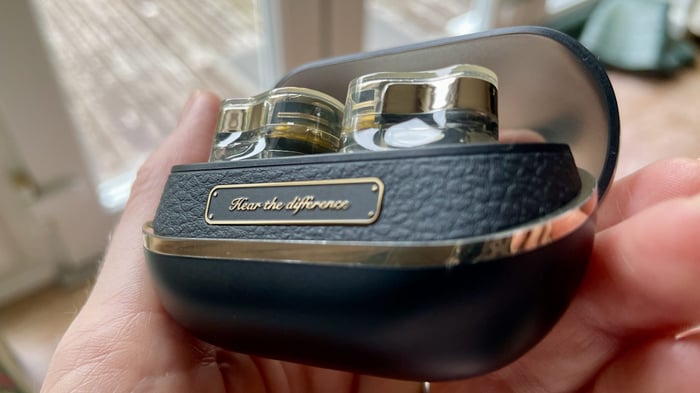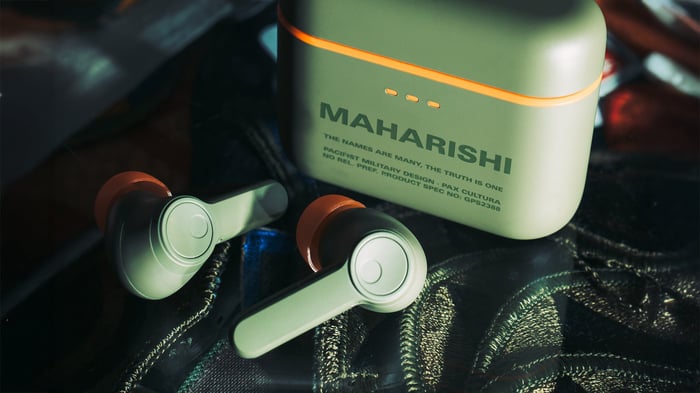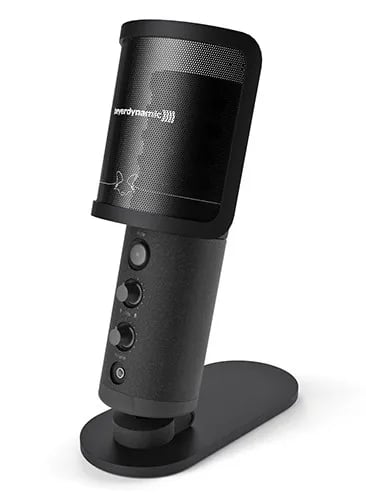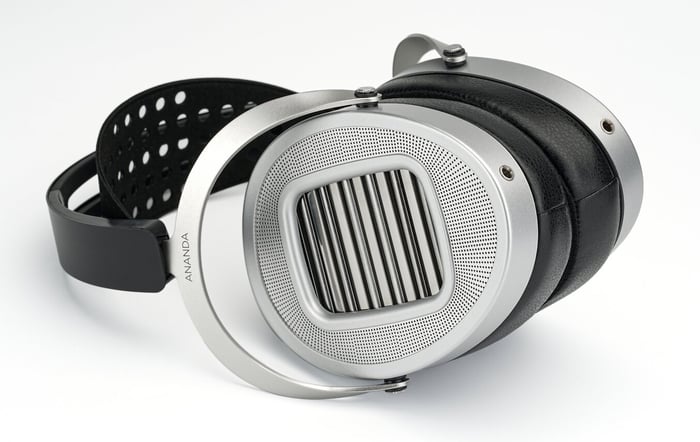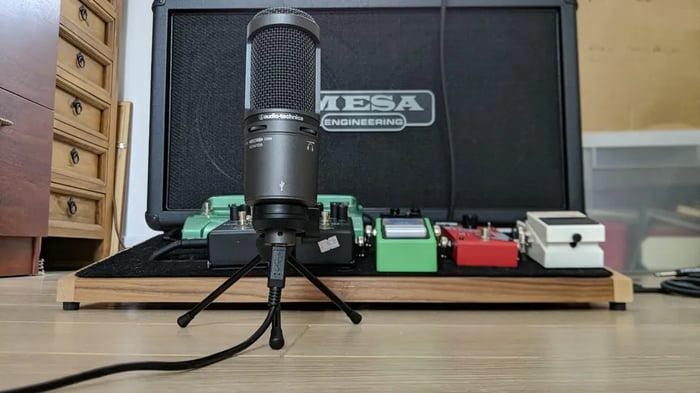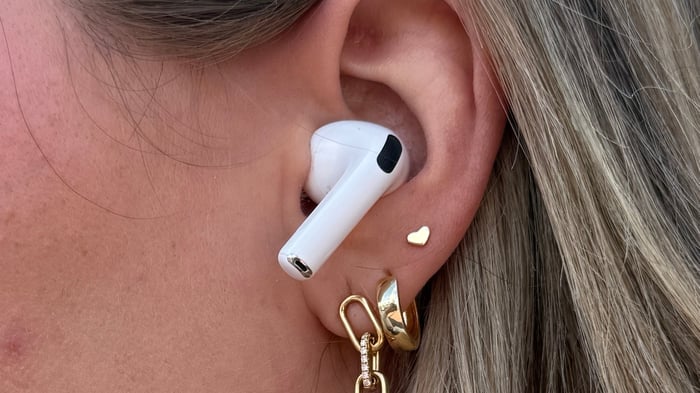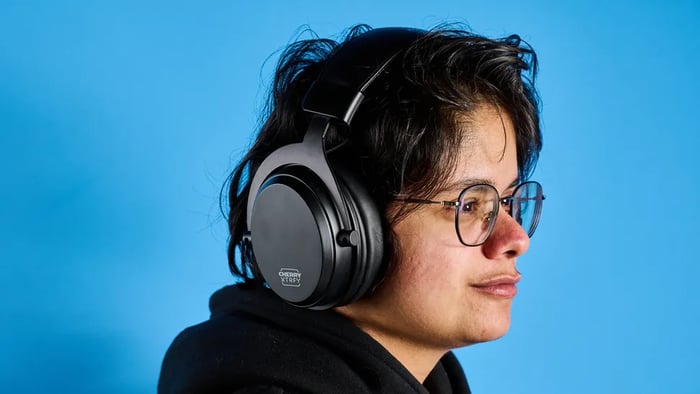
Pros and Cons of the Rode PodMic USB for Podcasting
Pros and Cons of the Rode PodMic USB for Podcasting
Explore the features and sound quality of the Rode PodMic USB, the versatile dynamic microphone designed for podcasters and streamers seeking reliable audio with USB convenience.
If you’ve been around the podcasting scene, you’ve likely heard of the Rode PodMic USB microphone—a steadfast companion since its debut in 2018. Now, Rode has given this crowd favorite a modern twist with the PodMic USB, a sibling that retains the solid charm of the original but adds USB-C connectivity and an internal digital signal processor (DSP).
Why should that matter to you? Well, if the idea of juggling an audio interface or mixer has ever felt like a hassle, the PodMic USB offers a much simpler plug-and-play experience with computers, tablets, and even phones. It’s like taking your trusted tank of a mic and giving it a turbo boost.
Design and Build: Rugged Elegance
What immediately grabs your attention is the sleek, matte black finish of the PodMic USB. Unlike the original PodMic’s black-and-silver look, this all-black model exudes a professional vibe that fits perfectly on any desktop or studio setup. I have to admit, it’s one of my favorite mic designs simply because it feels serious and stylish without trying too hard.
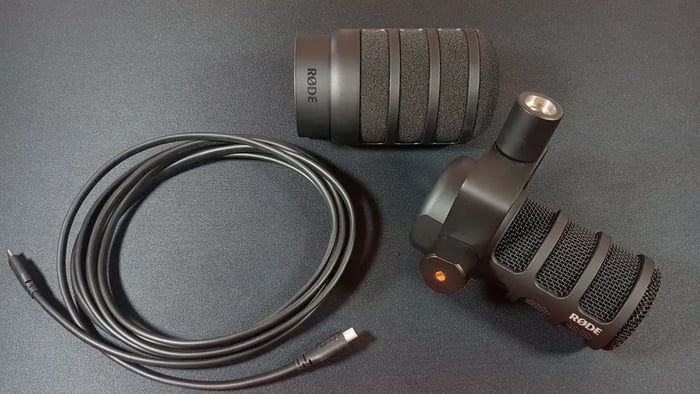
The PodMic USB’s matte black finish and sturdy design make it a standout on any desk.
Weighing in at a hefty 900 grams (about 1.9 pounds), it feels solid in your hand—almost like a tiny weapon, which in the podcasting world is a good thing. Sized at roughly 4.8 x 4.3 x 4.2 inches (123 x 110 x 109 mm, including the built-in swivel mount), it's compact yet substantial. The included swivel mount lets you angle the mic just right. However, keep in mind you'll need to purchase a stand or boom arm separately, as the box contains only the mic, a 3-meter USB-C to USB-C cable, and a foam-silicone pop filter that looks and feels a notch above standard pop shields.
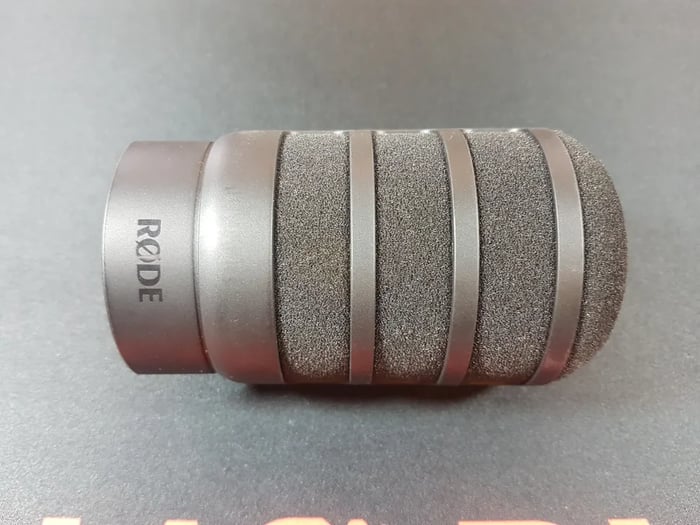
The included foam and silicone windscreen pop filter blends perfectly with the mic’s design.
Technical Specs at a Glance
| Mic Type | Dynamic |
| Frequency Response | 20 Hz – 20,000 Hz |
| Polar Pattern | Cardioid (directional) |
| Orientation | End-address |
| Sample Rate | 48 kHz |
| Bit Depth | 24-bit |
| Sensitivity | -57 dBV/Pa |
| Connectivity | USB-C (digital) and 3-pin XLR (analog) |
| Cable Length | 3 meters |
| Software Compatibility | Rode Central, Rode Connect, Rode Unify |
| Dimensions (with mount) | 123 x 110 x 109 mm |
| Weight | 900 grams |
| MSRP | Approximately $260 USD |
Sound Quality: Warm, Clear, and Adaptable
Though the PodMic USB looks nearly identical to the original, Rode revamped the internal hardware to include their Revolution Preamp and APHEX DSP technology, making it a much smarter mic.
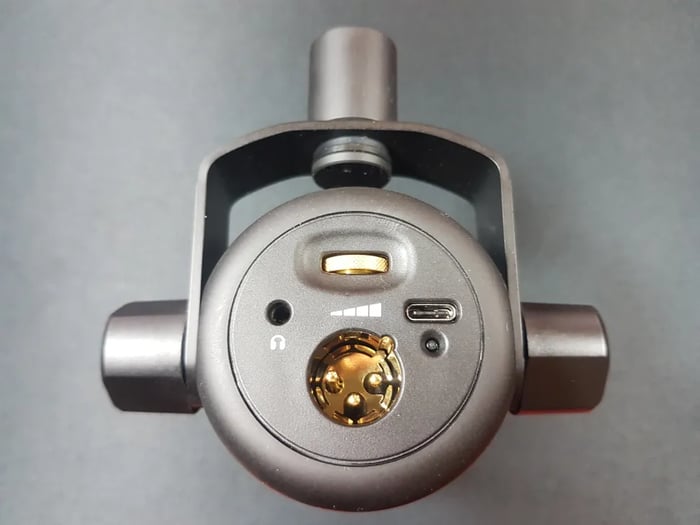
Inside, the PodMic USB boasts upgraded hardware for cleaner, richer sound.
The addition of USB-C means you don't need extra gear to get great sound—just plug it in and you're good to go. The traditional XLR port is still there for those who want to connect to professional mixers or audio interfaces, but here's the thing: the XLR output doesn’t work if the USB cable is connected simultaneously. A bit of a bummer for some users who might want to switch between setups on the fly, but not a dealbreaker in everyday use.
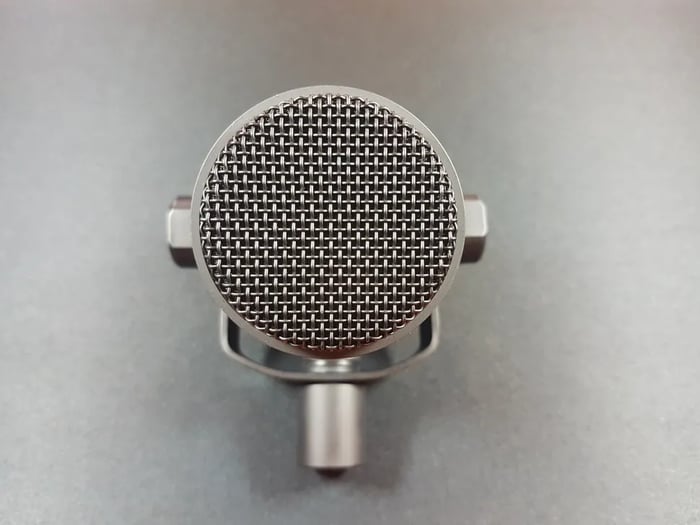
Dual connectivity options give flexibility, though only one input works at a time.
The cardioid pickup pattern means you’ll want to speak directly into the mic, and stay relatively close. This directional design is excellent for isolating your voice from background noise—especially handy if you’re recording in a less-than-ideal room without professional soundproofing. For anyone who's battled echo and keyboard clatter during streams or podcasts, this mic helps keep those distractions at bay.
During my testing, I noticed the USB-C connection allowed some subtle boosting in gain through DSP, making the mic more sensitive without adding noise. The sound is pleasantly warm and balanced, neither too boomy in the lows nor harsh in the highs. Personally, I like a touch of bass in my voice mics, whether for streaming or chatting on Discord, and the Rode Central software made it easy to tweak the DSP settings to my liking.
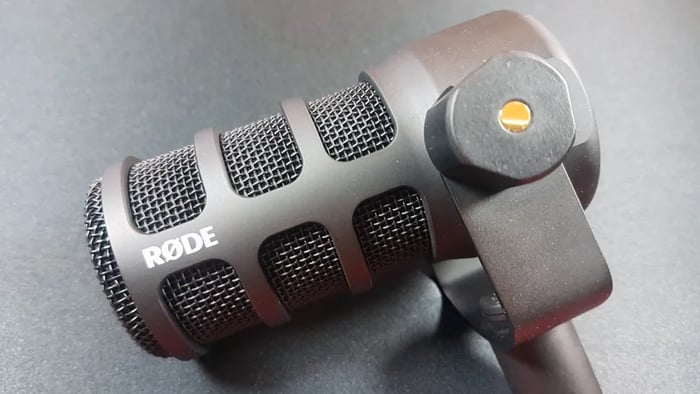
DSP customization lets you fine-tune your sound directly from your computer.
One of the standout features is how well the included pop filter and shock mount handle plosives and mechanical noise. I was frequently knocking the mic stand while shifting in my chair (classic podcaster problem!), but those sounds barely made it into the recording. The internal shock mount isolates the mic from bumps, and the foam-silicone windscreen effectively tames those explosive “P” and “B” sounds. Friends in my Discord server even commented on how clear and polished my voice sounded through the PodMic USB, which was a nice confidence boost.
Software Features: Control at Your Fingertips
The Rode PodMic USB comes with some powerful software support to match its hardware. The built-in Revolution Preamp and APHEX DSP allow fine control over your sound profile, including:
- High-pass filters
- Noise gates
- Compression
- Gain control
- EQ adjustments (high and low shelving filters)
All this is accessible via Rode’s software suite—Rode Central, Rode Connect, or Rode Unify—on your PC or Mac. Although the mic itself has only one physical control—a volume knob for headphone monitoring with zero latency—software lets you do all the heavy lifting for sound shaping.
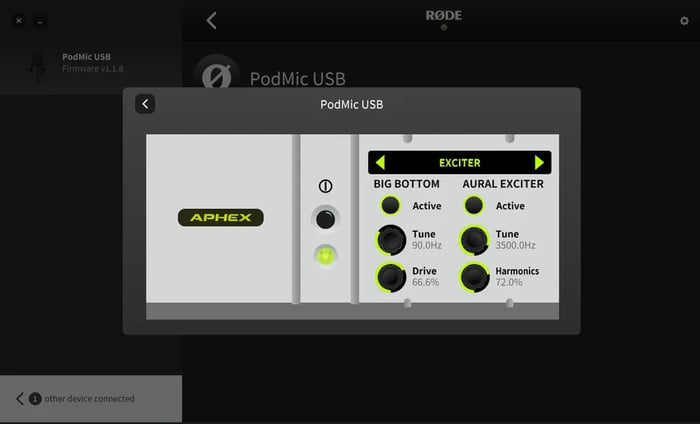
The volume knob doubles as a mute button when using the software, which is neat. But if you’re not hooked into the software or using the XLR connection, pressing the knob does nothing. Also, keep in mind the mic settings are stored on the device after you configure them, so you can unplug and take your custom sound on the road without missing a beat.
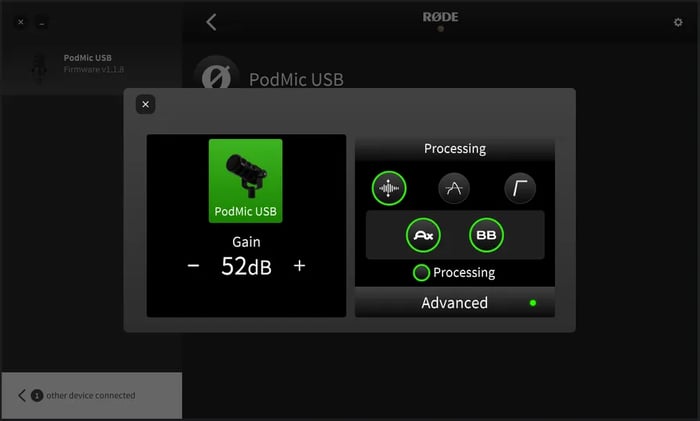
Simple on-mic controls keep your workflow smooth during recordings or streams.
Final Thoughts: Is the PodMic USB Worth It?
The Rode PodMic USB strikes a solid balance between professional audio quality and ease of use. Its dual connectivity (USB-C and XLR), quality build, and integrated DSP processing make it a versatile tool for podcasters, streamers, and content creators who want clean, customizable sound without excessive complexity.
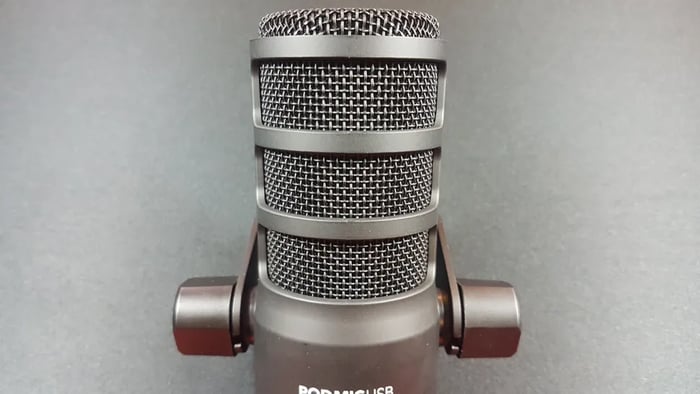
The PodMic USB fits effortlessly into any recording setup, from home studios to on-the-go podcasting.
While I do wish there were more physical controls on the mic itself (especially gain and DSP settings), the ability to save profiles via software and use the mic anywhere is a big plus. The only real downside is cost: at about $260, the PodMic USB is twice the price of the original PodMic, which retails around $130. Still, it’s half the cost of premium mics like the Shure SM7B, making it a great mid-range option that won’t break the bank.
"I was very impressed with the clarity of the recording and received plenty of compliments from friends about how good my voice sounded through the PodMic USB."
– Personal experience from testing Rode PodMic USB
FAQ
- What makes the PodMic USB different from the original PodMic?
The PodMic USB adds USB-C connectivity and an internal DSP, allowing direct connection to computers and devices without an audio interface. - Can I use the PodMic USB with a mixer?
Yes, it supports traditional XLR connections, though the XLR output disables when USB-C is connected simultaneously. - Does the PodMic USB include a stand?
No, it comes with a swivel mount but you’ll need to provide your own mic stand or boom arm. - How customizable is the sound?
You can adjust gain, EQ, compression, and more via Rode’s software suite, with settings saved on the mic. - Is the PodMic USB good for streaming and gaming?
Absolutely! Its noise isolation and warm vocal tone make it great for clean, professional-sounding streams and chats.
Ready to add a touch of podcasting professionalism to your space? Shop your favorite album cover posters and more to complement your vibe at Architeg Prints—where your creative journey begins.
 | DISCOUNTGET 30% OFF*Use code on your next order:
|
* This post may contain affiliate links, meaning we earn a commission if you make a purchase through these links, at no additional cost to you.



